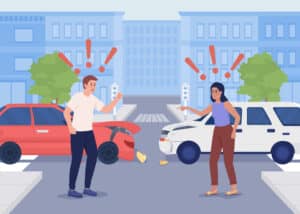
When it comes to car collisions, blame is often one of the first things that come to mind. In at-fault accidents, it is crucial to know which driver should bear the liability. So, whether you’re a seasoned driver or a newbie with fresh rubber on your tires, understanding this is of paramount importance. Let’s begin by discussing what we mean by ‘at-fault’ accidents.
At-fault Accidents
This term is commonly used in the auto insurance industry. At-fault accidents refer to cases where the blame can be mainly assigned to one party – the one deemed ‘at fault’. The most important point to keep in mind is that the party responsible for the harm is typically required to pay for the following:
- Auto car damage
- Property damage or loss
- Medical costs associated with injuries
Fault Determination
Determining fault in a car accident varies greatly depending on the laws of your specific state or country. But generally, it hinges on the legal concept of ‘negligence.’ It is the failure to act with the level of care that a reasonable person would have exercised in the same circumstance. Negligence can be any of the following:
- Not observing traffic rules
- Speeding
- Distracted driving
- Driving under the influence
For instance, if you’re driving well above the speed limit and then collide with another vehicle, you could be deemed at-fault. Even if the other driver did something wrong, like failing to signal, the primary blame may still fall on you because your speeding is considered a greater violation.
But remember, fault determination isn’t always 100% one way or the other. Many states (including Arizona) follow a system known as ‘comparative negligence.’ This means that fault can be shared among parties involved in the accident. For example, if you were speeding, but the other driver ran a stop sign, both of you might share the blame. If you were found to be 60% at fault, you would be responsible for 60% of the damage costs, while the other driver would bear 40%.
Driver Liability
In a legal sense, liability refers to responsibility. Therefore, if you cause an automobile accident and are at fault, then you are the one responsible for the damages. Here, your auto insurance liability protection kicks in and pays for the other driver’s automobile repairs and medical expenses up to the limits of your policy. If the cost of the damages is greater than the policy’s limits, the difference is now your obligation. In this situation, costs can quickly add up, which is why having enough coverage is very much essential.
One crucial point to note is that in ‘no-fault’ states, each driver’s insurance pays for their own damages. This is regardless of who caused the accident. The idea behind no-fault insurance is to prevent lengthy legal battles over who was to blame. However, severe accidents may still end up in court if damages exceed a certain threshold.
Accidents are never a pleasant experience, but understanding the concepts of fault and liability can make the aftermath a little less confusing. Remember that safe driving practices are your best defense against finding yourself in an at-fault accident. Keep your eyes on the road, observe traffic rules, and make safety your top priority. The exact rules can vary depending on your location and the specifics of the accident. It’s always a good idea to consult with a car accident attorney if you have questions about at-fault accidents.







